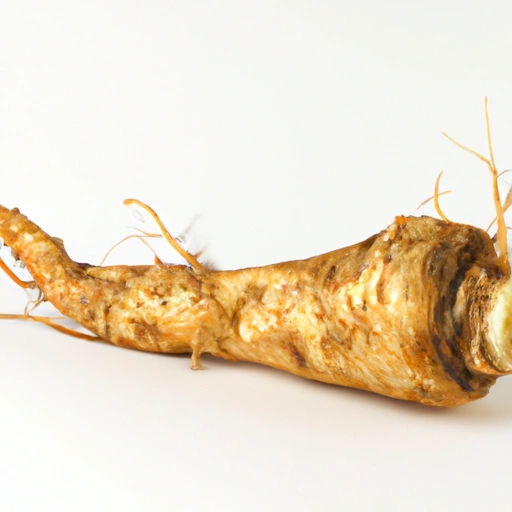Horseradish Root
Description

Horseradish root is a potent root vegetable known for its pungent, spicy flavor, which is released when the root is cut or grated. A member of the Brassicaceae family, which includes mustard, wasabi, broccoli, and cabbage, horseradish root is commonly used as a condiment or a spicy addition to various dishes. It's typically prepared by being peeled, grated, and mixed with vinegar to preserve its flavor.
Common uses
Horseradish root is widely used as a condiment, often accompanying roast beef, seafood, or as an integral component of cocktail sauce. It's also a traditional addition to the Jewish Passover Seder plate. In some cuisines, the fresh or dried root is grated and used to add a fiery taste to dishes.
Nutritional value
Calories
Horseradish root is low in calories, with approximately 48 calories per 100 grams (3.5 oz).
Protein
It contains about 1.2 grams of protein per 100 grams (3.5 oz).
Fat
This root is virtually fat-free, with less than 0.1 grams of fat per 100 grams (3.5 oz).
Carbohydrates
Horseradish root has about 11 grams of carbohydrates per 100 grams (3.5 oz), which includes dietary fiber.
Vitamins
Horseradish is a good source of vitamin C, providing around 25% of the recommended daily intake per 100 grams (3.5 oz).
Minerals
It also contains essential minerals such as potassium, calcium, magnesium, and phosphorus.
Health benefits
Horseradish root is associated with several health benefits, including its potential to improve respiratory health, its antibacterial properties, and its role in stimulating digestion. The high vitamin C content also supports immune system function.
Potential risks
While horseradish is generally safe for most people, it can cause irritation to the mouth, nose, and stomach if consumed in large quantities. Those with ulcers, inflammatory bowel disease, or thyroid conditions should use it cautiously.
Common recipes
Horseradish root is often used to make sauces, such as the classic horseradish sauce, and is an essential ingredient in many seafood sauces. It can also be found in some salad dressings and marinades.
Cooking methods
Typically, horseradish is grated fresh and used raw or mixed with vinegar. It can also be roasted or added to cooked dishes for a milder flavor.
Pairing with other ingredients
Horseradish pairs well with rich and fatty meats, potatoes, beets, and is perfect for adding a kick to creamy dips and spreads.
Summary
Horseradish root is a versatile and robust ingredient that offers a unique spicy flavor to a variety of dishes. Whether used as a condiment or an integral part of a recipe, it provides nutritional benefits and can contribute to a flavorful culinary experience. Its history as a valued and medicinal plant adds to its allure in cuisines across the globe.